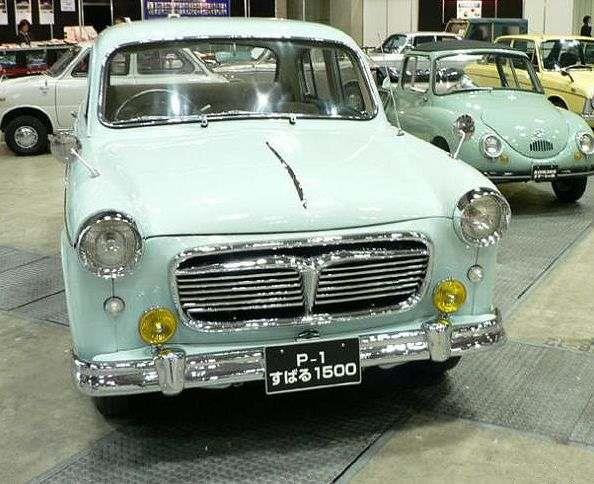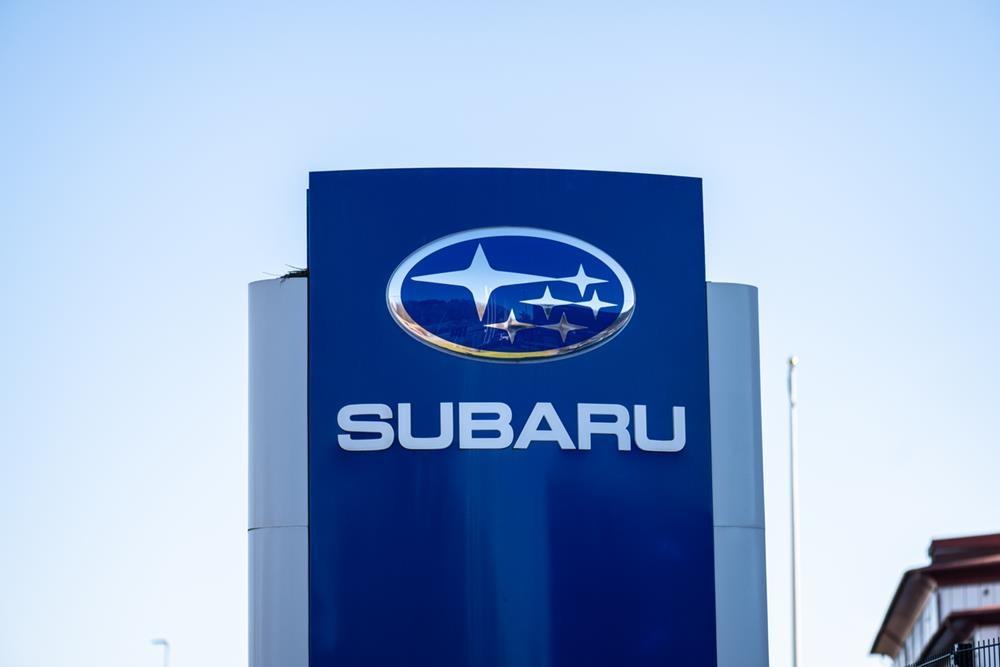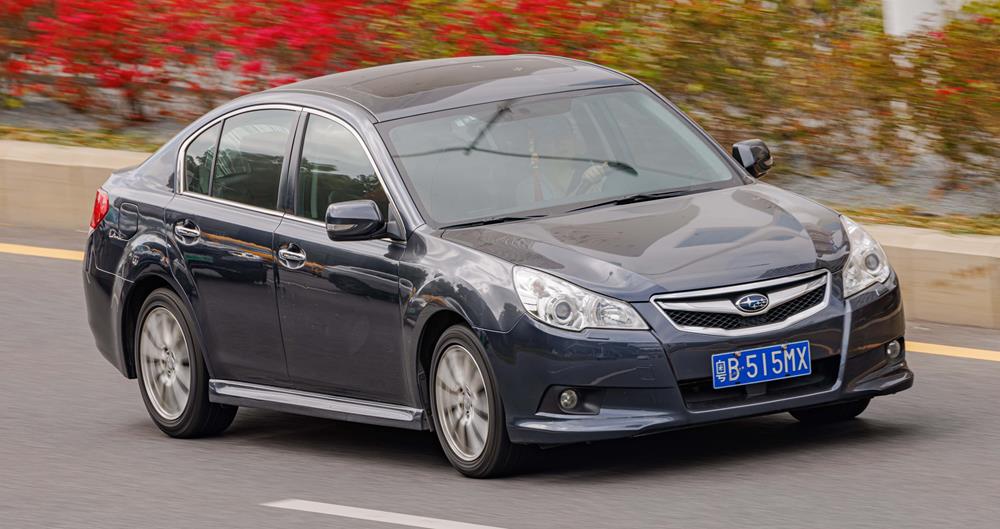Subaru, a name synonymous with innovation and resilience, has carved a unique niche in the automotive world. With its beginnings rooted in the early 20th century, Subaru has evolved from a small aircraft manufacturer to a globally recognized automotive brand known for its commitment to quality, safety, and technological advancement.
This journey through time reveals how Subaru, born out of the conglomerate Fuji Heavy Industries, transitioned into a key player in the car manufacturing industry, continually pushing the boundaries of automotive engineering.
The Early Beginnings
Subaru’s journey started as an aircraft research company named Fuji Heavy Industries (FHI) in 1915. This early period marked the foundation of Subaru’s enduring dedication to engineering excellence. During World War II, FHI became a prominent force in Japan’s aircraft manufacturing, playing a crucial role in the country’s aviation history. However, the end of the war signaled a pivotal shift for the company.
In the post-war era, FHI recognized the need to diversify and reinvent itself. The company’s foray into automobile manufacturing marked the birth of the Subaru brand in 1953. This transition was not just a change in production but a complete overhaul of the company’s direction and vision.
First Car and Early Breakthroughs
The first car to bear the Subaru name was the P1, introduced in 1954. Although not widely known, the P1 (later known as Subaru 1500) set the stage for what was to come. It was in 1958 when Subaru truly made its mark with the introduction of the Subaru 360. This tiny, air-cooled car, affectionately known as the “ladybug” in Japan, became a symbol of post-war Japanese mobility. Its compact design and affordability made it immensely popular, setting Subaru on the path to becoming a household name in the automotive industry.
Continuing its momentum, Subaru launched the Sambar in 1961, a microvan that catered to Japan’s growing small business sector, showcasing Subaru’s ability to innovate according to market needs. This period of rapid growth and experimentation laid the groundwork for Subaru’s future successes.
Growth and Expansion (1960s – 1980s)
Entering the Global Market
As the 1960s progressed, Subaru didn’t just rest on its laurels. The introduction of the Subaru 1000 in 1965 marked a significant leap. This model was the first to feature Subaru’s now-signature boxer engine, a testament to the brand’s engineering prowess. The Subaru 1000 wasn’t just a car; it was a bold statement of Subaru’s innovative spirit and technological capabilities.
Innovating for a Diverse Market
During the 1970s and 80s, Subaru embraced diversity and expansion. The R2, launched in 1969, was a direct response to the evolving needs of the urban driver, offering more space and power than its predecessor, the 360.
In 1983, the Subaru Domingo, a versatile and spacious van, hit the market, showing Subaru’s ability to cater to different consumer needs. The launch of the Subaru Alcyone in 1985 was another milestone. This sports coupe, known for its aerodynamic design and powerful engine, showcased a different facet of Subaru’s manufacturing capabilities.
Building a Reputation for Reliability
During this period, Subaru also began to establish itself as a brand synonymous with durability and reliability. This reputation was bolstered by the Subaru Leone, introduced in the early 1970s, which became popular in international markets, especially in the United States. Subaru’s all-wheel-drive system, introduced in the late 70s, became a defining feature of the brand, further cementing its reputation for producing vehicles that could handle a variety of terrains and weather conditions.
Era of Innovations (1980s – 1990s)
Revolutionizing All-Wheel Drive
Subaru’s innovative spirit took a giant leap in the late 1980s and 1990s, particularly with the introduction of the Subaru Legacy in 1989. This model was more than just a new vehicle; it was the embodiment of Subaru’s advanced engineering, featuring the now-iconic Symmetrical All-Wheel Drive system. This technology revolutionized the concept of all-wheel drive, offering unparalleled balance and stability, and became a cornerstone of Subaru’s identity.
A New Era with the Impreza
In 1993, Subaru unveiled the Impreza, a compact car that would later gain fame on rally tracks around the world. The Impreza was not just a car; it was a symbol of Subaru’s commitment to performance and reliability. Its success in the World Rally Championships highlighted Subaru’s engineering expertise, capturing the imagination of car enthusiasts globally.
Pioneering Automotive Safety and Environmental Initiatives
Subaru’s impact on the automotive industry extends beyond performance vehicles. The brand has been a pioneer in automotive safety, consistently scoring high in safety ratings with features like the EyeSight driver assist technology. Subaru has also shown a commitment to environmental stewardship, with initiatives like the Subaru Global Platform designed to enhance their vehicles’ safety and environmental performance.
Being a Leader in Engine Design
The BOXER engine, another of Subaru’s significant innovations, exemplifies the brand’s engineering philosophy. Its unique horizontal layout offers a lower center of gravity compared to traditional engines, contributing to improved stability and handling. This engine design, coupled with Subaru’s dedication to all-wheel drive, demonstrates the brand’s unique approach to car manufacturing, differentiating it from other automotive brands.
Modern Era and Future Directions (2000s – Present)
Embracing the SUV Trend
As the new millennium unfolded, Subaru continued to evolve with market trends. The launch of the Subaru Forester in 1997 marked the brand’s foray into the growing SUV market. The Forester combined Subaru’s renowned all-wheel-drive system with the versatility and space of an SUV, making it an instant hit among families and adventure enthusiasts alike.
Expanding into New Segments
The introduction of the Subaru Tribeca in 2005 represented another significant milestone, as Subaru’s first entry into the mid-size SUV category. This model showcased Subaru’s ability to create vehicles that not only performed well but also offered comfort and luxury, appealing to a broader consumer base.
Electric Vehicles and Beyond
Looking ahead, Subaru is not just content with maintaining its legacy but is actively working towards shaping the future of the automotive industry. The brand’s focus on electric vehicles (EVs) and advanced driver-assistance systems signifies a commitment to innovation and environmental sustainability. Subaru’s recent announcements and concept vehicles indicate an exciting future, with plans to integrate electric powertrains and cutting-edge technology into their lineup, aligning with global trends towards cleaner, more sustainable transportation solutions.
Subaru’s Impact on the Automotive Industry
Subaru made significant contributions to the world of cars, setting new standards for the industry and popularizing rally-inspired vehicles among mainstream drivers. Here are some of the ways Subaru has impacted the automotive industry:
Revolutionizing All-Wheel Drive Systems
Subaru transformed the automotive landscape with its symmetrical all-wheel drive system. This technology, introduced in the late 1970s, was not merely an added feature but a fundamental aspect of Subaru’s vehicle design. It provided enhanced stability, traction, and safety, particularly in adverse weather conditions, setting a new benchmark for all-terrain capability in passenger cars.
Subaru’s success with all-wheel drive prompted other automakers to adopt similar technologies in their vehicles. This widespread adoption has elevated all-wheel drive from a niche feature to a standard option in many models across the industry.
Pioneering in Rally Racing and Sports Performance
Subaru’s involvement and success in the World Rally Championships, especially with the Subaru Impreza WRX, brought the brand global recognition. The WRX, with its powerful engine, durable build, and exceptional handling, became an icon of rally racing.
The popularity and performance of Subaru’s rally cars had a significant trickle-down effect on its consumer vehicles. Features and technologies developed for the rigors of rally racing found their way into everyday Subaru models, offering consumers a blend of practicality and performance.
Advancing Vehicle Safety Standards
Subaru has consistently been at the forefront of vehicle safety. With a focus on structural integrity and innovative safety technologies, Subaru models regularly achieve top safety ratings in various global safety assessments.
One significant advancement in safety made by Subaru is theirEyeSight driver assist technology, which was introduced in 2008. Using cameras and software, EyeSight provides features like adaptive cruise control, lane keep assist and pre-collision braking. This system has set a precedent in the industry, pushing other manufacturers to develop similar driver-assist technologies.
Cultivating a Loyal Customer Base
Subaru has cultivated a loyal customer base through its commitment to reliability and quality. The brand’s focus on building durable, long-lasting vehicles has resulted in a high rate of repeat customers and strong brand loyalty.
Their marketing and brand positioning have fostered a strong community of enthusiasts. The brand is often associated with outdoor lifestyles, adventure, and a sense of camaraderie among owners, further enhancing its impact on automotive culture.
Environmental Initiatives and Sustainability
Subaru has been proactive in its environmental initiatives, from manufacturing processes to the development of more fuel-efficient and eco-friendly vehicles. This commitment aligns with growing global concerns about environmental sustainability and influences industry trends towards greener practices.
Notable Product Offerings and Innovations
Over the years, Subaru has introduced several notable models and tech innovations that have left a lasting impression, which include the following:
Subaru 360
Launched in 1958, the Subaru 360 was the car that put Subaru on the map. Known as the “ladybug” in Japan, it was one of the country’s first mass-produced minicars. Its small, lightweight design made it affordable and accessible, fulfilling a growing need for personal transportation in post-war Japan.
The 360’s success laid the foundation for Subaru’s philosophy of creating compact, efficient vehicles. Its popularity helped establish Subaru as a significant player in the automotive market, setting the stage for future innovations.
Subaru Leone
Introduced in the early 1970s, the Subaru Leone was the first mass-produced car equipped with Subaru’s now-famous all-wheel drive system. This feature was groundbreaking at the time, offering improved safety and performance, particularly in rough terrain and inclement weather.
The Leone was Subaru’s first model to gain international success, particularly in markets like the United States and Australia. It solidified Subaru’s reputation for producing durable, all-terrain vehicles and played a crucial role in popularizing all-wheel drive systems in passenger cars.
Subaru Legacy
The Subaru Legacy, introduced in 1989, was a significant step up in terms of size and luxury compared to previous models. It offered more interior space, comfort, and a higher level of performance.
The Legacy was also a showcase for Subaru’s engineering advancements, including improved versions of the BOXER engine and the advanced all-wheel drive system. These features enhanced the Legacy’s appeal in both the mainstream and enthusiast markets.
Subaru Impreza and WRX
The Subaru Impreza launched in 1993, and its high-performance variant, the WRX, has become synonymous with rally racing excellence. Their success in the World Rally Championships elevated Subaru’s status as a manufacturer of high-performance, reliable vehicles.
The technology and design elements from the Impreza and WRX have trickled down to other Subaru models, offering consumers a blend of everyday usability and sporty performance.
Subaru’s Eco-Friendly Technology
In recent years, Subaru has ventured into hybrid and electric vehicle technology. Models like the Subaru Crosstrek Hybrid represent the brand’s commitment to eco-friendly and sustainable mobility solutions.
Subaru’s approach to hybrid technology involves integrating electric motors with their traditional BOXER engines and all-wheel drive systems, maintaining the brand’s unique driving characteristics while enhancing fuel efficiency and reducing emissions.
EyeSight Driver Assist Technology
Subaru’s EyeSight system, introduced in 2008, marked a major innovation in driver-assist technology. Using a set of dual color cameras and sophisticated software, EyeSight provides a suite of safety features like adaptive cruise control, lane departure warning, and pre-collision braking.
EyeSight has been widely praised for its effectiveness in preventing accidents and reducing injury severity, setting a new standard for active safety systems in the automotive industry.
Subaru’s Future Directions and Upcoming Innovations
Transition to Electrification and Hybrid Technologies
Subaru has recognized the global shift towards electrification in the automotive industry and is actively adapting its lineup to include more electric and hybrid vehicles. This transition is part of Subaru’s long-term strategy to meet evolving consumer demands and environmental regulations.
Subaru’s current foray into hybrid technology, as seen in models like the Crosstrek Hybrid, is just the beginning. These models combine Subaru’s traditional BOXER engine with electric motors, offering improved fuel efficiency and reduced emissions while maintaining the brand’s characteristic driving experience.
Advancing Driver-Assist and Safety Technologies
Subaru continues to advance its EyeSight driver-assist technology, integrating more sophisticated features for enhanced safety. Future iterations of EyeSight are expected to include improved camera technology, machine learning capabilities, and additional driver-assist functions, further reducing the likelihood of accidents.
While Subaru is known for its driver-focused vehicles, the brand is also exploring autonomous driving technologies. This includes research and development in areas like vehicle-to-vehicle communication and advanced navigation systems, aiming to enhance safety and convenience for drivers.
Sustainable and Eco-Friendly Manufacturing
Subaru is intensifying its efforts to reduce the environmental impact of its manufacturing processes. This includes initiatives to achieve carbon neutrality in its factories, reduce water usage, and minimize waste.
In addition to hybrid and electric vehicles, Subaru is investigating other eco-friendly technologies, such as advanced battery systems and alternative fuels, to reduce the carbon footprint of its vehicles further.
Innovations in Vehicle Design and Engineering
Subaru is developing new vehicle platforms that are more adaptable and efficient. These platforms are designed to accommodate a variety of powertrains, including traditional combustion engines, hybrids, and fully electric systems, providing flexibility for future vehicle designs.
Despite the shift towards electrification and new technologies, Subaru remains committed to delivering vehicles that are enjoyable to drive and comfortable to ride in. This includes ongoing improvements in vehicle dynamics, interior ergonomics, and noise reduction.
Global Expansion and Market Adaptation
Subaru aims to expand its global footprint further, entering new markets and strengthening its presence in existing ones. This includes tailoring its vehicle lineup to meet the specific needs and preferences of different regions. They are continuously monitoring and adapting to changing market trends, ensuring that its product offerings remain relevant and appealing to consumers worldwide.






